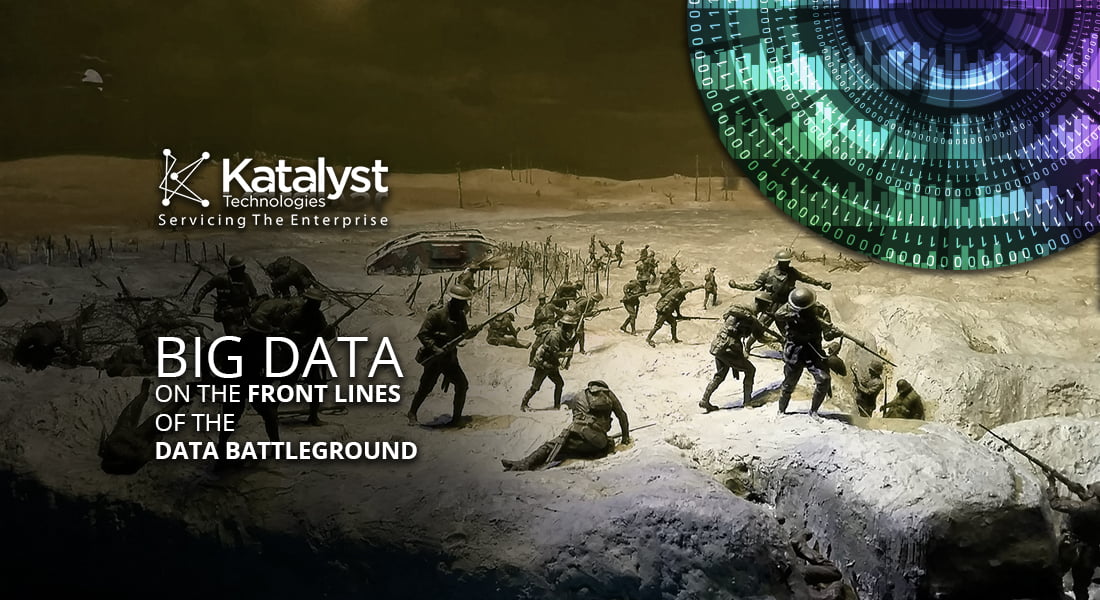
Data in and of itself can be somewhat intimidating for companies, so “big data“ must be an even greater source of trepidation. But organizations must realize that they should not be waging war against big data; they are fighting a battle in which big data could be their greatest weapon. The better they understand it, the more equipped they will be in facing off against the competition.
Data Definitions
One of the reasons why data is so confusing is the proliferation of similar-sounding terms. Database, data set, data warehouse…one could hardly be faulted for wanting to raise the white flag and immediately surrender. Conquering these terms is one of the trickiest battles your enterprise will face, but it‘s actually less scary than you might expect. Here are a few of the basics (and most easily mixed up) definitions to master:
Data: Text, numbers, or some other form that represents a measurement or observation of some sort
Data set: An organized collection of (usually) related data points
Database: An organized collection of data sets in a system that allows it to be studied and updated in relation to other data sets
Data lake: A centralized collection of an enterprise‘s raw data
Data warehouse: A centralized collection of an enterprise‘s data in a structured format
Data mining: A systematic, mathematical process of studying your enterprise‘s data in order to find meaningful patterns and trends
Data analytics: A nuanced, interpretive process of studying patterns and trends in data, determining why and how they turn up and how to use that information for future strategy
When Does Data Become “Big Data“?
Put simply, there is no clear point where data officially becomes “big.“ Many data experts have rejected the term over the years because it‘s so vague and open to interpretation.
“Big data takes on a new definition practically every year,“ says Kasian Franks, co-founder of Vectorspace AI. “That‘s because data grows exponentially.“ The assumption is that technology will evolve, but in an industry that thrives on an ever-growing and specific vocabulary, big data has been frustratingly variable through the years—or perhaps more accurately, it‘s been frustratingly consistent in its ambiguity.
“Back then, it was based on whether or not you needed a data warehouse to manage everything,“ says Franks. “But today, big data is defined by whether or not it [relies on] a deep learning system.“ One method commonly used to determine the “bigness“ of data is the four V‘s:
- Volume: The quantity of data available, and whether it meets the subjective standard of “big“
- Variety: The media of the available data—text, images, video, etc.
- Velocity: The speed at which data is stored and processed. One criterion often applied to “big data“ is that it can be accessed in real–time
- Veracity: The quality and accuracy of the data
An organization doesn‘t need to be big to have big data. If you‘re having trouble managing your current data, reach out to the experts at Katalyst. We can be your organization‘s allies in the fight, charging towards the ideal solutions.
What Should I Be Doing with Data?

Big or not, your data needs to serve a purpose. Understanding past trends are key, but seeing how your company can use that data to move forward is even more vital.
“When a company is able to use data to make predictions, that’s where the real value comes in,“ says Franks. “Whether it’s predictions about their own operations, or whether it’s predictions about other companies, or [to] make predictions about where an industry is going, most of the time when you collect data, you want to make a prediction with it.“
One prediction that‘s safe to make: big data will keep getting bigger, and understanding it will give your enterprise a big competitive advantage.

